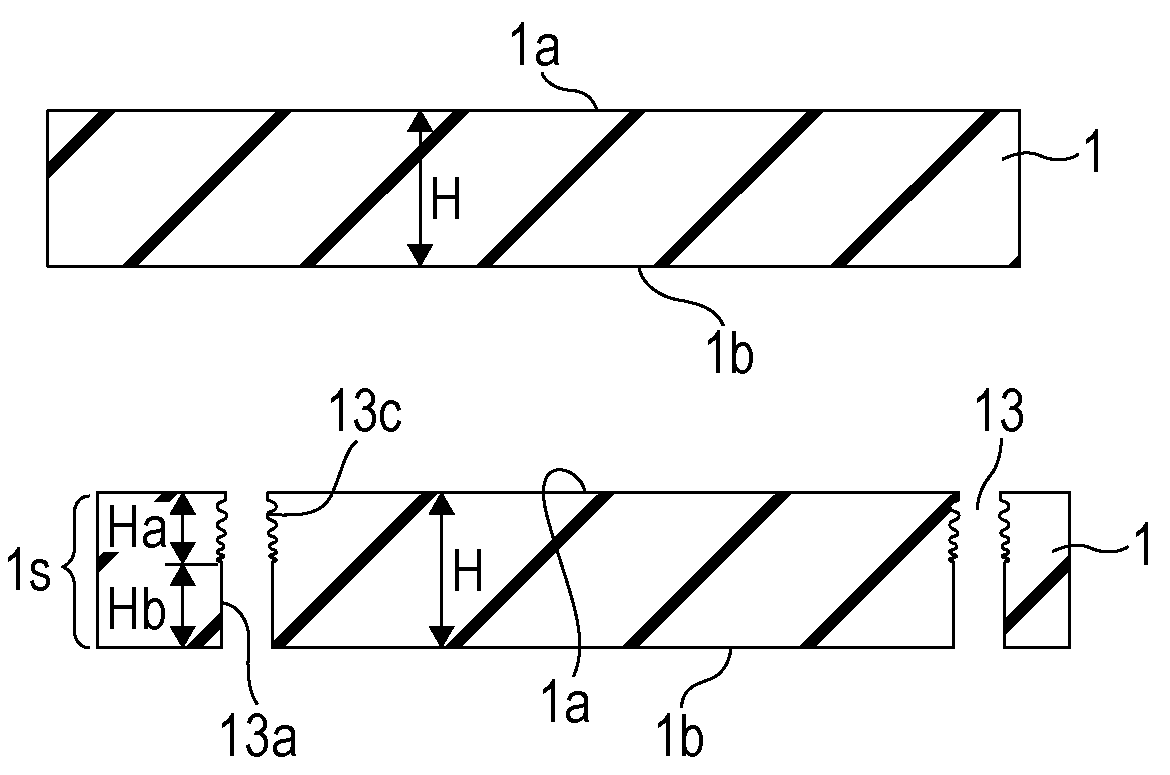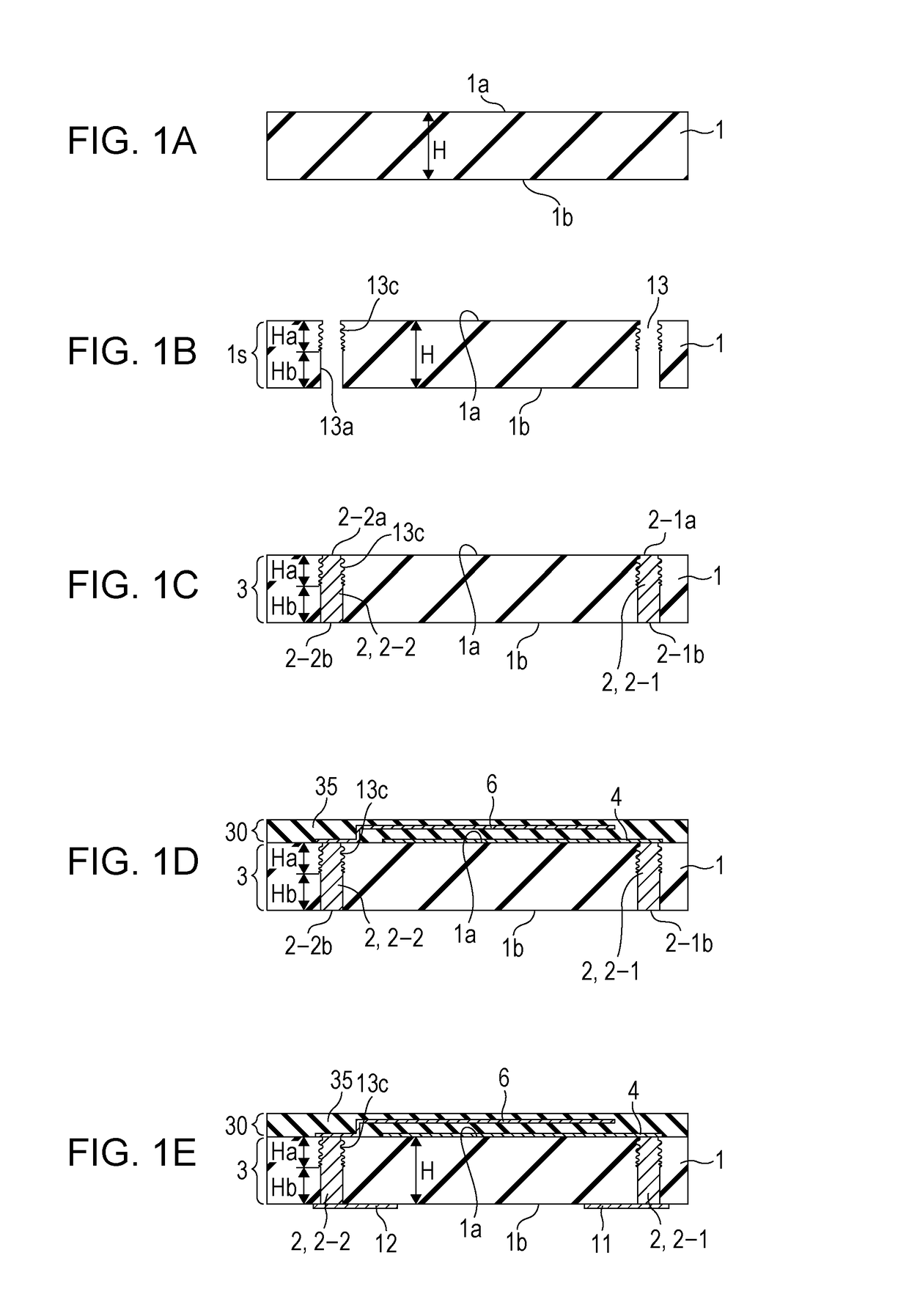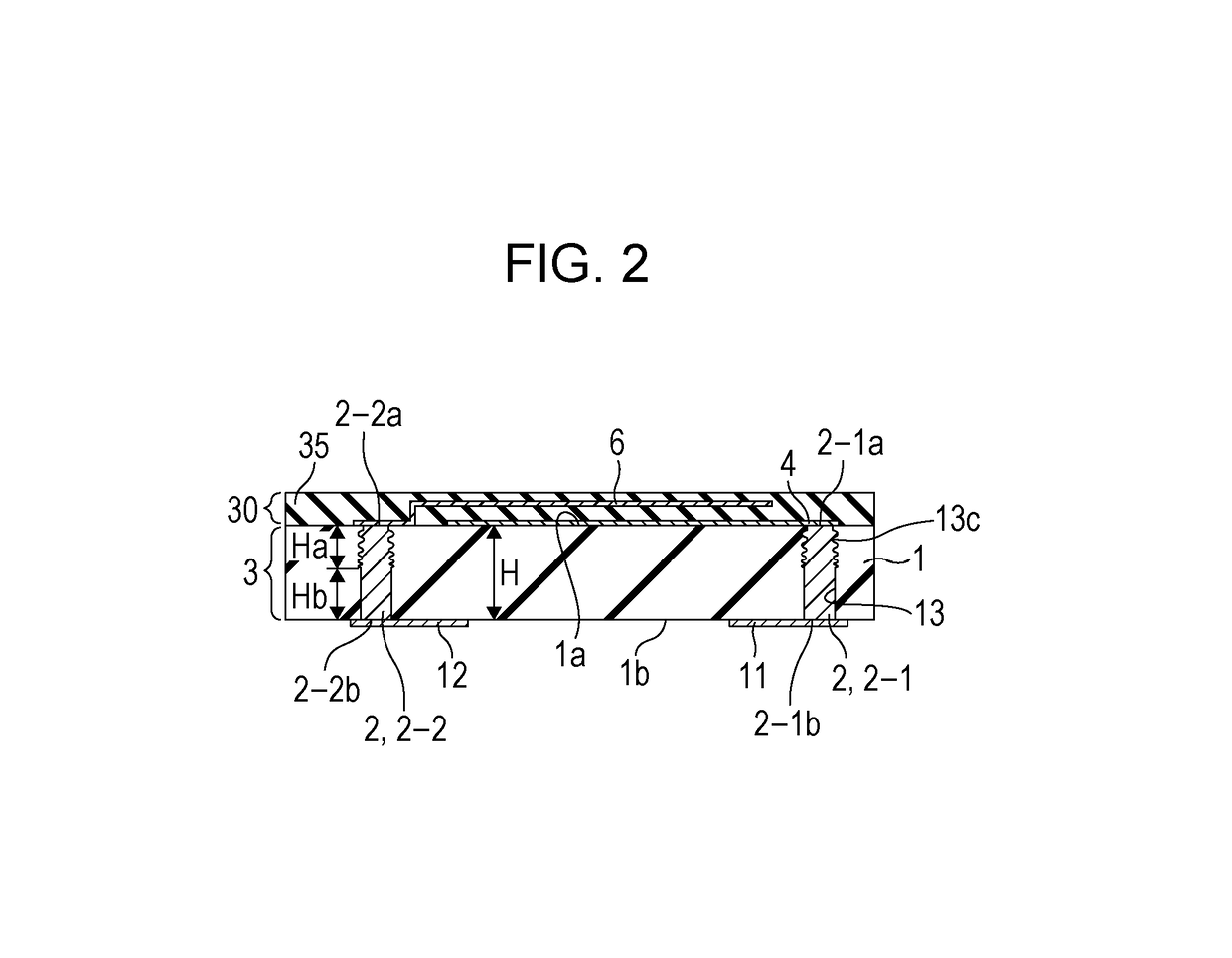Method of producing through wiring substrate and method of producing device
a technology of wiring substrate and wiring layer, which is applied in the direction of mechanical vibration separation, semiconductor/solid-state device details, instruments, etc., can solve the problems of high resistivity of through wiring, deformation, permanent deformation, damage, etc., to increase reduce temperature, and improve the degree of integration of elements
- Summary
- Abstract
- Description
- Claims
- Application Information
AI Technical Summary
Benefits of technology
Problems solved by technology
Method used
Image
Examples
first embodiment
[0026]A first embodiment of a method of producing a device according to one or more aspects of the present disclosure is described with reference to FIGS. 1A to 1E. FIGS. 1A to 1E are sectional views illustrating the present embodiment. Although a plurality of through wirings or a plurality of elements are simultaneously formed in a single substrate in typical production of the device, only two through wirings and a single element are illustrated in FIGS. 1A to 1E as appropriate for ease of seeing by simplifying illustration.
[0027]Initially, as illustrated in FIG. 1A, a first substrate 1 is prepared. The first substrate 1 is formed of an insulating material such as glass or a semiconductor material such as Si. The first substrate 1 includes a first surface 1a and a second surface 1b positioned on the opposite side to the first surface. Both the first surface 1a and the second surface 1b of the first substrate 1 are flat and mirror polished. The thickness of the first substrate 1 is,...
second embodiment
[0042]An embodiment of a structure of the device according to one or more aspects of the present disclosure is described with reference to FIG. 2. FIG. 2 is a sectional view illustrating a second embodiment. Typically, a plurality of through wirings or a plurality of elements are formed in a single device. However, only two through wirings and a single element are illustrated in FIG. 2 for ease of seeing by simplifying illustration.
[0043]As illustrated in FIG. 2, the device according to the present embodiment includes the through wiring substrate 3, the element structure 30, and the electrode pads 11 and 12. The through wiring substrate 3 includes the first substrate 1, the through holes 13 that extend from the first surface 1a to the second surface 1b of the first substrate 1, the second surface 1b being the opposite surface to the first surface 1a, and the through wirings 2 (including the through wirings 2-1 and 2-2) formed of the electrically conductive material with which the in...
first example
[0051]A first example of the method of producing the device according to one or more aspects of the present disclosure is described with reference to sectional views of FIGS. 3A to 3F. For ease of seeing, only two through wirings and a single element are illustrated as appropriate also in FIGS. 3A to 3F.
[0052]Initially, as illustrated in FIG. 3A, the first substrate 1 is prepared. As the first substrate 1, an Si substrate is used. The first substrate 1 includes the first surface 1a and the second surface 1b. These two surfaces are mirror polished so as to have a surface roughness of Ra≤2 nm. The resistivity of the first substrate 1 is about 0.01 Ω·cm. The thickness H of the first substrate 1 is about 300 μm.
[0053]Next, as illustrated in FIG. 3B, the through holes 13 are formed so as to extend from the first surface 1a to the second surface 1b of the first substrate 1. The through holes 13 each have a substantially cylindrical shape. The diameter of the openings in the first surface ...
PUM
| Property | Measurement | Unit |
|---|---|---|
| surface roughness | aaaaa | aaaaa |
| surface roughness | aaaaa | aaaaa |
| height | aaaaa | aaaaa |
Abstract
Description
Claims
Application Information
 Login to View More
Login to View More - R&D
- Intellectual Property
- Life Sciences
- Materials
- Tech Scout
- Unparalleled Data Quality
- Higher Quality Content
- 60% Fewer Hallucinations
Browse by: Latest US Patents, China's latest patents, Technical Efficacy Thesaurus, Application Domain, Technology Topic, Popular Technical Reports.
© 2025 PatSnap. All rights reserved.Legal|Privacy policy|Modern Slavery Act Transparency Statement|Sitemap|About US| Contact US: help@patsnap.com



